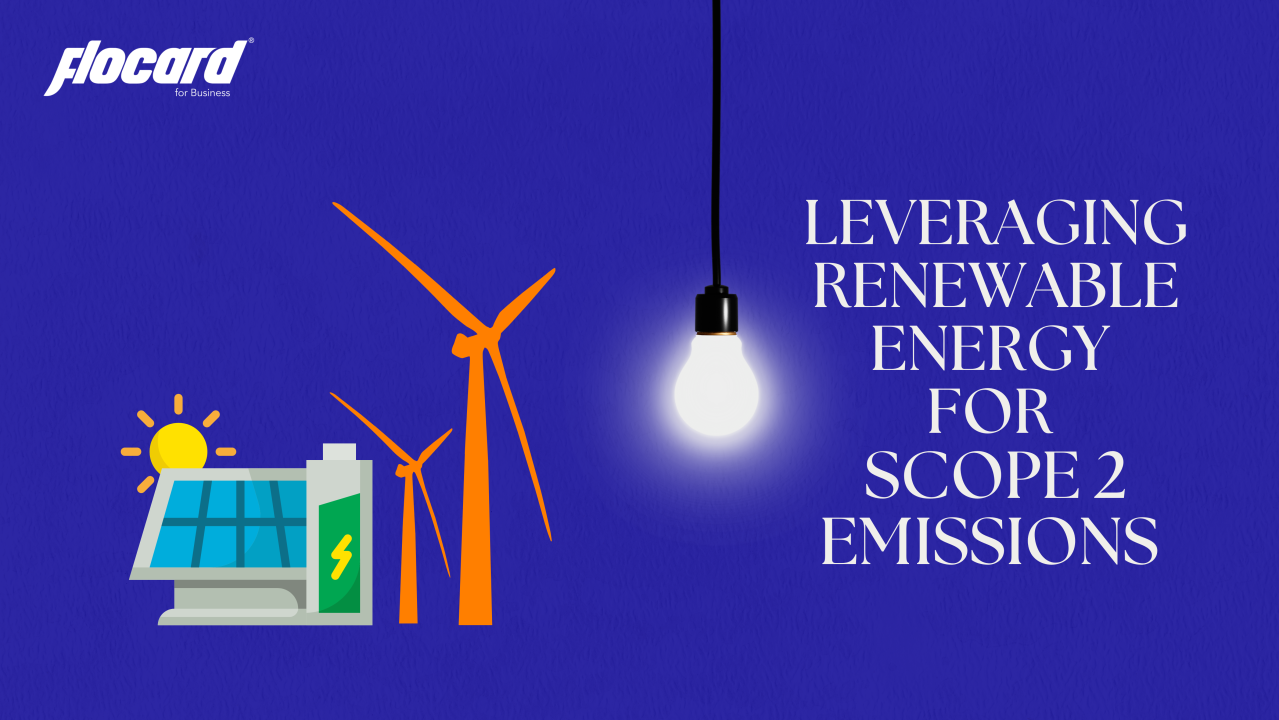Empowering Businesses: The Role of Renewable Energy in Cutting Scope 2 Emissions

Leveraging Renewable Energy to Reduce Scope 2 Emissions
Introduction
-
A. Definition and significance of Scope 2 emissions
Scope 2 emissions are the emissions which result because of the electricity purchased by the company. These emissions don’t result because of electricity production or manufacturing within the organizational boundaries. GHG Protocol has divided the emissions in the form of “scopes”. Scope 2 emissions from a company or an organization enable a company to measure the emissions and help them to have control of these emissions using strategic sustainable initiatives.
-
B. Importance of reducing Scope 2 emissions for sustainability goals
Energy generation is accountable for 40 per cent of greenhouse gas emissions in the environment, and thus it becomes important for organizations to realise that this can be reduced by employing energy-efficient measures. As countries move ahead to meet their sustainability reduction targets, it becomes crucial to understand the scope 2 emissions by the companies. It enables companies to track, monitor and measure the amount of Scope 2 emissions and work on reduction strategies to achieve their sustainability goals. Integration of energy and sustainability is the perfect cocktail to reduce environmental degradation.
Renewable Energy for Scope 2 Emission Reduction
-
A. Explanation of renewable energy sources
Renewable energy is the self-replenishing energy which is natural in origin. This energy doesn’t go down and has a low or zero carbon footprint. The most common sources of renewable energy include wind energy, solar energy, bioenergy, and tidal energy. The burning of fossil fuels like coal, and natural gas causes an emission of greenhouse gases, and thus renewable energy is considered a sure-shot solution to tackle climate change and reduce scope 2 emissions.
-
B. Benefits of renewable energy in reducing Scope 2 emissions
Energy derived from renewable energy is the future for us. Renewable energy can significantly reduce the carbon footprint on the planet and reduce GHG emissions. It is estimated that renewable energy has the potential to deliver 75 per cent of GHG emission reduction on target. Moreover, many modern economies like the UK, Germany, and Spain have made progress toward renewable energy, yet there is a scope left for industries and small organizations.
Renewable energy-sourced electricity is the best way to transform energy consumption and take the first step towards scope 2 emissions. As energy finds its use in industries, transport, and cooking, this transition becomes much more important due to wide electricity consumption. Renewable energy is the new solution to achieve decarbonisation targets.
Implementation Strategies
-
A. Overview of renewable energy procurement options
Corporations and organizations can improve their sustainability reports by seeking out renewable energy procurement options. There are many options available for corporate buyers to invest in renewable energy. Let us look at some and understand their advantages and limitations.
- On-site generation- Renewable energy like solar, wind, water and others can be generated onsite. This is advantageous in terms of cost-effective solutions for corporates, short-term payback guarantees and achieving sustainability targets. It even gives power quality and supply reliability with backup to the financial risks against grid failure. However, long-term energy storage and cost-competitive values for renewable energy solutions are crucial to be addressed.
- Purchase of green power-Many utility firms offer renewable energy in the form of “power blocks” or “monthly electricity usage” to the companies. These companies offer a small premium to the company in exchange for electricity derived from renewable energy. This energy is given in the form of an “energy attributable certificate”. This is advantageous to the companies as no management or expiry of these certificates happens. Yet, there are cost challenges associated with a naive company's purchase of green power. This cost can be reduced as one gains experience in purchasing procedures and market dynamics.
- Power Purchase Agreements (PPAs) -PPAs are long-term agreements between companies and power producers for specifications like the amount of electricity supplied, the price, the length of the agreement and others. This provides a revenue source for the solar and wind-powered plant and cuts down the retail cost. The companies can easily control the source of renewable energy buy.
- Renewable Energy Certificates (RECs)RECs are renewable energy procurement options for companies. RECs certify that the bearer owns 1 MWh of electricity generated from renewable sources. The certificate can be unbundled and sold in the open market as a carbon credit to offset emissions. This is a cost-effective and easy solution for c ompanies to offset their carbon emissions. However, companies continue to use fossil fuels and still claim that their operations are renewable.
Conclusion
Sustainability reporting is evolving and becoming more demanding. These companies have to report to multiple stakeholders and measure their impact on the environment to various stakeholders under different frameworks. Companies to achieve their sustainability targets need to take carbon offsetting procedures strictly. Renewable energy through various procurement options such as RECs, PPAs, green power and on-site generation is a promising alternative. Measuring and managing renewable energy purchases is a complex procedure and crucial for companies to monitor their progress towards sustainability. It is thus important for companies to adopt a robust reporting mechanism to enable companies to measure and manage their environmental impact.
Be a part of the FloCard ecosystem for a sustainability journey that is traceable, trustable, transparent, and secure.
